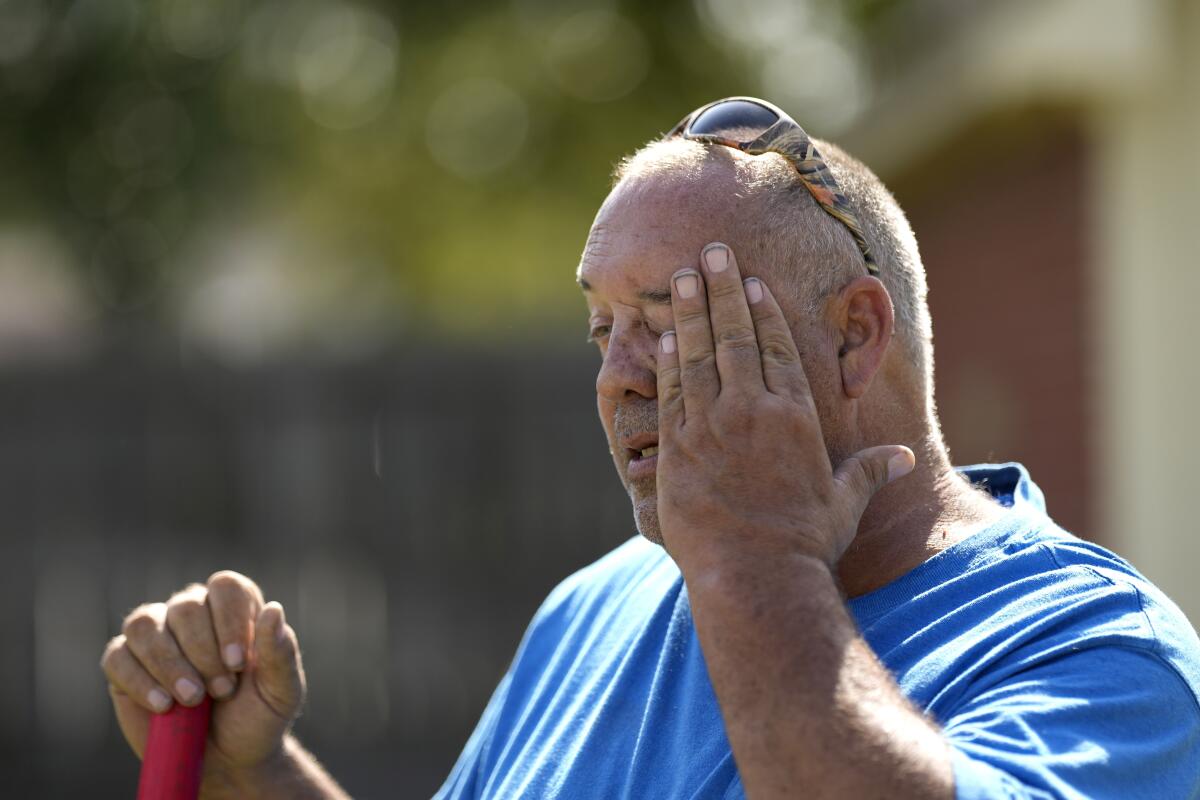You think L.A. is risky? Try Houston. Or San Bernardino

- Share via
The spate of powerful storms that caused rampant flooding and mudslides this week reminded Southern Californians of the perils that can make this region feel more like something out of catastrophe central than central casting.
But if it makes you feel any better, it’s worse in Houston.
That judgment is coming from a consumer advocacy group called claimguide.org, by the way, not the Los Angeles Chamber of Commerce. Based in Orlando, Fla., the group says its goal is to inform and guide consumers as they file insurance claims and deal with their insurers.
In a report released Friday, the group ranked the 170 biggest U.S. cities according to the risks faced by homeowners. “Our weighted assessment includes key insurance-based criteria, such as instances of environmental risk and public safety issues, median age and condition of homes, accessibility to emergency services, and a tally of prior natural disasters, all of which affect a region’s risk outlook and contribute to the insurance burden on homeowners,” the report says.
Houston ranked at the top of the risky list, hampered by the percentage of homes facing high heat (98%, which seems low) and flooding (64%), along with the relatively high rate of property crimes per 100,000 residents (4,526). That pushed the city with the iconic Astrodome ahead of San Bernardino, which ranked second despite its high scores on homes facing high heat (100%), wildfires (91%) and natural disasters (59%).
Woodland Hills, located in the San Fernando Valley, has had some of the hottest temperatures ever recorded in Los Angeles County. It also gets a lot of rain — sometimes over a foot — during storms.
Glendale, which ranked third, has a profile like San Bernardino’s, with large percentages of homeowners facing high heat (96%), wildfires (99%) and natural disasters (80%). On the plus side, the city has a relatively low score on property crimes per 100,000 residents (1,820) and percentage of homes at risk of flooding (22%). Take that, Houston.
Slots 4 through 9 were filled by hot and wet cities in Florida and Louisiana, all of which have high rates of unoccupied homes to go along with their heat waves and hurricanes. That’s important, the report says, because “your snowbird neighbor may not take appropriate precautions in preparing their property for the worst, leaving your home vulnerable to large debris and other knock-on effects of storm and flood damage.”
Coming it at No. 10 was Rancho Cucamonga, thanks to a startling share of homeowners at risk of wildfires: 100%.
At the bottom of the risk list was Boise, Idaho. Just as a reminder, the report’s rankings don’t include social, cultural or political perils.
Los Angeles ranked 12th. Its comparatively high scores for homes facing natural disasters (a whopping 80%), high heat (86%) and wildfires (63%) were offset by comparatively low scores for flood risk (19%) and property crimes per 100,000 residents (2,699).
Overall, heat, wildfire and natural disaster risks pushed California cities into nearly half of the top 20 spots.
According to claimguide, the report’s findings were based on data from the Census Bureau’s 2022 American Community Survey, the Federal Emergency Management Agency, the FBI’s crime reports, the Department of Homeland Security and two sources focused on climate change, Risk Factor and First Street Foundation.
In tandem with the risk analysis, claimguide.org surveyed 1,500 people in January about their sense of risk. Nearly 40% said they had been directly affected by a flood, wildfire or other natural disaster, and 35% said they were considering moving to avoid climate-related disasters.
There’s no need to move out of state, though. The least risky California cities, according to the report, were Sunnyvale at No. 165 and Modesto at No. 164.
More to Read
Sign up for Essential California
The most important California stories and recommendations in your inbox every morning.
You may occasionally receive promotional content from the Los Angeles Times.












